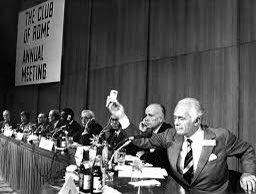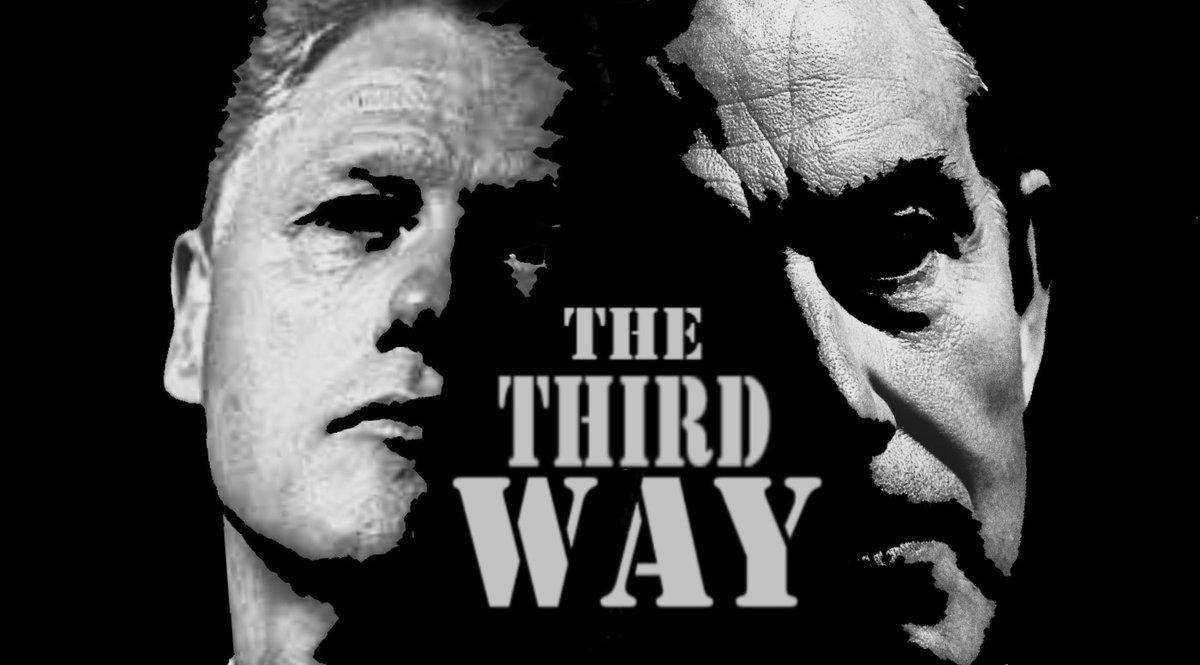This is it! Explosive!! 🤯👇👇
This is the true story of the men who recruited Schwab via a CIA funded course & who were the REAL driving force behind the creation of the WEF.
Klaus Schwab: or How the CFR Taught Me to Stop Worrying and Love the Bomb
unlimitedhangout.com/2022/03/invest…
This is the true story of the men who recruited Schwab via a CIA funded course & who were the REAL driving force behind the creation of the WEF.
Klaus Schwab: or How the CFR Taught Me to Stop Worrying and Love the Bomb
unlimitedhangout.com/2022/03/invest…
Welcome to a Swabian Thread:
For those who wish to begin understanding the real life & rise to power of Klaus Schwab, it is best to start at the beginning.
Schwab Family Values takes you forward from the 1870s & through Schwabs formative years.
unlimitedhangout.com/2021/02/invest…
For those who wish to begin understanding the real life & rise to power of Klaus Schwab, it is best to start at the beginning.
Schwab Family Values takes you forward from the 1870s & through Schwabs formative years.
unlimitedhangout.com/2021/02/invest…
Klaus Schwab’s father was a man named Eugen Schwab. He worked for a ‘Model Nazi Company’ called Escher Wyss and managed the companies Ravensberg factory.
Schwab’s Nazi factory made large turbines for the secret Nazi heavy water-based atomic bomb project.



Schwab’s Nazi factory made large turbines for the secret Nazi heavy water-based atomic bomb project.



In the early 1960s, Eugen Schwab would tell his son Klaus that to really succeed he’d have to study at Harvard, amongst the people who were focused on the Cold War threat of thermonuclear war & deterrence.
Klaus would leave for Harvard in 1965.
world-today-news.com/klaus-schwab-o…
Klaus would leave for Harvard in 1965.
world-today-news.com/klaus-schwab-o…
Klaus wouldn’t take a specific course at Harvard, instead he was invited to be a participant in Henry A Kissinger’s “International Seminar” which had been set up by CFR grandee William Yandell Elliott & received $146.00 in funding from the CIA.
thecrimson.com/article/1967/4…

thecrimson.com/article/1967/4…

Schwab was soon noticed & recruited by Kissinger, who would introduce Schwab to two other very powerful US political advisors who’d help Schwab create the World Economic Forum.
The first of these men was a CFR member named John Kenneth Galbraith.



The first of these men was a CFR member named John Kenneth Galbraith.



Galbraith was professor to JFK, had married a lady who’d lived with Hitlers girlfriend, & went to Germany in 1938 to study land policies under Hitler.
As WWII ended, Galbraith would be sent back to Germany to interrogate Albert Speer, one of the highest ranking Nazi officials.
As WWII ended, Galbraith would be sent back to Germany to interrogate Albert Speer, one of the highest ranking Nazi officials.

Later, Galbraith served under Kennedy, even drafting the Johnson 1st speech after JFKs assassination.
By the late 60s, Galbraith had joined forces with Kissinger. Galbraith would travel to Europe to help Schwab recruit for the 1st Davos.
He was the WEF’s 1st key note speaker.
By the late 60s, Galbraith had joined forces with Kissinger. Galbraith would travel to Europe to help Schwab recruit for the 1st Davos.
He was the WEF’s 1st key note speaker.

The 2nd man who Kissinger introduced to Schwab was Herman Kahn, often described as the real Dr Strangelove.
Herman Kahn’s Hudson Institute had been working on thermonuclear disaster planning and mapping out the potential political repercussions from using nuclear deterrence.
Herman Kahn’s Hudson Institute had been working on thermonuclear disaster planning and mapping out the potential political repercussions from using nuclear deterrence.

In 1961, Herman Kahn would produce his seminal work, ‘On Thermonuclear War’ which would, a few years later, be parodied in Stanley Kubrick’s Dr Strangelove.
By 1966, Kahn was working for the state department and predicting the future of technology.
By 1966, Kahn was working for the state department and predicting the future of technology.
In 1967, Kahn would produce, The Year 2000, which would successfully predict most of the major technological advancements we would see today.
Although not all the predicted tech was actually achieved by the millennium, the document is still proving to be accurate today.



Although not all the predicted tech was actually achieved by the millennium, the document is still proving to be accurate today.



Kahn would be introduced to Schwab around the same time as he was writing this document.
Schwab would spend the rest of his life trying to make Kahn’s predictions reality, irrelevant of any potential dangers, or even the many warnings from Kahn himself.
archive.org/details/year20…
Schwab would spend the rest of his life trying to make Kahn’s predictions reality, irrelevant of any potential dangers, or even the many warnings from Kahn himself.
archive.org/details/year20…
Alongside ‘The Year 2000’, Kahn would produce another ancillary document which would map out how to achieve the future he’d envisioned.
In this document, Kahn would map out what would essentially become the WEF Young Global Leader program, but in 1967.
archive.org/details/ERIC_E…
In this document, Kahn would map out what would essentially become the WEF Young Global Leader program, but in 1967.
archive.org/details/ERIC_E…
Herman Kahn would travel to Europe with Galbraith to help sell the WEF project (initially called the European Management Symposium) to prospective partners.
He’d be one of the draws of the 1st Davos and would watch Galbraith give the 1st keynote address.
nytimes.com/1997/01/28/bus…
He’d be one of the draws of the 1st Davos and would watch Galbraith give the 1st keynote address.
nytimes.com/1997/01/28/bus…
When Schwab left Harvard in 1967, he would be contacted by Peter Schmidheiny of Escher-Wyss, Schwab’s fathers old Nazi Model Company.
He would easily convince Schwab to help him with a major merger between Sulzer & Escher-Wyss to create Sulzer AG.
de.m.wikipedia.org/wiki/Peter_Sch…
He would easily convince Schwab to help him with a major merger between Sulzer & Escher-Wyss to create Sulzer AG.
de.m.wikipedia.org/wiki/Peter_Sch…
The company Schwab created would also aid the South African Apartheid regime in their illegal thermonuclear bomb program.
Yes, like father, like son. Both Schwab’s would help genocidal racist regimes to try to gain atomic & nuclear weapons.
books.google.cl/books?id=dvSX8…
Yes, like father, like son. Both Schwab’s would help genocidal racist regimes to try to gain atomic & nuclear weapons.
books.google.cl/books?id=dvSX8…
After the launch of the forum in 1971, & due to the support of Kissinger, Kahn & Galbraith, Klaus Schwab’s World Economic Forum was up & running. But the forum would stall in its 2nd year.
So, for the 3rd Davos, Klaus Schwab would get Malthusian.
widgets.weforum.org/history/1973.h…
So, for the 3rd Davos, Klaus Schwab would get Malthusian.
widgets.weforum.org/history/1973.h…
In 1973, Aurellio Peccei head of the Club of Rome would promote their 1972 report “The Limits to Growth” as Schwab’s chosen keynote speaker.
Peccei’s Davos speech suggested using climate change to control public opinion & declared human beings themselves to be the new enemy.
Peccei’s Davos speech suggested using climate change to control public opinion & declared human beings themselves to be the new enemy.

• • •
Missing some Tweet in this thread? You can try to
force a refresh









